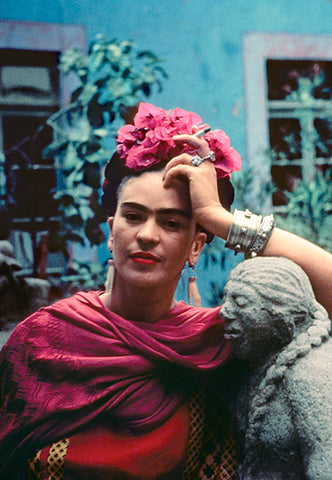Celebrating Hispanic-Latinx Heritage Month
While the celebration of Hispanic-Latinx heritage exists all year long, we want to take a moment to spotlight the histories, cultures, and contributions of peoples from Spain, Mexico, the Caribbean islands, and Central and South America as we celebrate Hispanic-Latinx Heritage Month.
From September 15th until October 15th, we celebrate, explore, and learn about the diverse Latinx communities and cultures. Coined as "Hispanic Heritage Month" and expanded to a national holiday in 1988, we encourage you to check out this informative comic diving deeper into the difference between Hispanic and Latinx, and this brilliant explanation of the nuances of these terms by @asif.tv on TikTok for more. While there is overlap between the two terms, contrary to popular belief, they are not interchangeable.
The term Latinx, added to the Merriam-Webster Dictionary in 2018, is officially defined as "of, relating to, or marked by Latin American heritage —used as a gender-neutral alternative to Latino or Latina." Alternately used as Latin@ in online communities or Latine in conversational Spanish, we include the word Latinx in our celebration of Hispanic Heritage Month to recognize the vast spectrum of cultures across the globe, beyond those of Spanish origin. For many, including those on our team, the term Latinx provides a more inclusive identity and a broader vision of a vibrant cultural tapestry.
So what are some things you can do to help out? Educating yourself on Hispanic-Latinx American history, enjoying Latinx art and advocating for more representation in media, learning what you can do to help these communities with your vote, and research and donate to local non-profits impacting and strengthening these people through grassroots community organization.
There are so many amazing efforts advocating for Latinx and Hispanic communities throughout the country such as the Translatin@ Coalition, an organization helping transgender, gender non-conforming, and intersex Latinx immigrants while amplifying educational resources to promote empowerment of Trans leaders.
You can find more Latinx advocacy organizations to donate to here!

Credit Antama Textiles
Textile art is often woven into national and indigenous identity, symbolizing culture and tradition, and telling a story of the people and the land.
Today, we highlight one traditional garment: the rebozo.
The rebozo, a naturally-dyed woven garment from Mexico, is one example of a culturally significant handcrafted textile. Rebozos are long, flat, shawl-like garments that are a staple to Mexico’s national identity that highlight the traditional handweaving techniques that have carried on for hundreds of years.
Famously recognized as one of the most recognizable and influential Mexican artists, Frida Kahlo wore a traditional rebozo in many portraits like the one below. Each piece tells a unique story, and it serves as a lens into Mexican heritage and pride.

Credit: Nickolas Muray at gilcrease.org
Throughout life, women are gifted rebozos to mark significant milestones in their life such as coming of age, marriage, times of mourning, and traditional festivals.
The art of weaving a rebozo is an oral tradition passed down over generations through repetition, practice, observation, and love, establishing this intricate craft as a key element of Mexican history. To learn more about the cultural context of rebozos and the effect cultural appropriation has had on traditional midwifery practices, visit this blog post by Antama.


Credit Antama Textiles
Nowadays, rebozos are primarily used as a garment and for carrying objects. However, the kinds of fiber and weave patterns of rebozos influence their purpose and are used to provide warmth, protect oneself from the sun, and accessorize. Traditionally, they are used in midwifery practices, fertility treatments, and to swaddle and carry infants. Learn more details in this blog post that expands on the current institutional forces that systematically threaten the spiritual practice and knowledge of traditional midwifery.
 Credit Antama Textiles
Credit Antama Textiles
It is vital to recognize that many Hispanic and Latinx communities exist within the African Diaspora. The origins of our craft and the techniques we use come from Indigenous communities throughout the globe, many of which exist in the regions we celebrate this month.
Indigenous communities and traditional crafting techniques such as the handweaving used to create rebozos are slowly becoming extinct due to the social and economic impacts of modernization, globalization, colonization, and imperialism.
In Mexico, indigenous communities experience persistent racism and governmental neglect, which has pervasive social and economic impacts. Leaving most in poverty, many communities migrate to big cities in search of opportunity. Traditional garments identify these groups as indigenous, forcing many to leave behind their land, ancestral knowledge, and cultural traditions including textiles.
Younger generations are hesitant to embrace their cultural heritage because of a long history of marginalization and discrimination, which results in not only a loss of traditions but also a myriad of indigenous languages, rather than learning and cherishing ancestral duties and customs due to external pressures.
To support and learn more about the creation of rebozos, we encourage you to visit Antama Textile’s linktree to explore their resources and donate.
Resources:
https://mayancopal.com/blogs/news/mexican-rebozo-history
https://www.madreluna.com.au/blog/historical-and-cultural-background-of-the-rebozo


